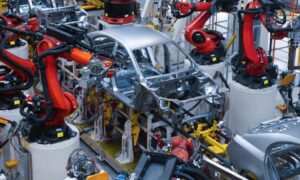Introduction:
In the dynamic realm of software development, quality assurance is a critical component that ensures applications meet user expectations and perform seamlessly across diverse environments. As technology evolves, so do the methodologies for software testing. Enter Software Testing 2.0 – a next-generation approach that goes beyond traditional testing methods, leveraging advanced techniques to enhance the quality and reliability of applications. In this article, we will explore the evolution of software testing, delve into the principles of Software Testing 2.0, and discuss how it is reshaping the landscape of quality assurance.
The Evolution of Software Testing:
Traditional Testing Methods:
Traditionally, software testing involved manual testing and scripted test cases. While these methods were effective to a certain extent, they had limitations in terms of scalability, efficiency, and the ability to handle complex systems. As applications became more intricate and development cycles shortened, the need for a more robust testing framework became apparent.
Automation Revolution:
The advent of automated testing marked a significant shift in software testing methodologies. Automated testing tools allowed for the execution of repetitive test cases with precision, reducing human error and accelerating the testing process. However, these tools were often confined to specific functionalities and lacked the adaptability required for rapidly evolving software environments.
Software Testing 2.0 Principles:
Shift-Left Testing:
Software Testing 2.0 embraces the “shift-left” approach, emphasizing early testing in the development lifecycle. By incorporating testing at the beginning of the software development process, defects and issues are identified and addressed at their nascent stages, leading to more robust and reliable applications.
Continuous Integration and Continuous Testing:
In the era of Software Testing 2.0, testing is seamlessly integrated into the continuous integration and continuous delivery (CI/CD) pipeline. This ensures that testing is not a standalone phase but an ongoing process that adapts to the rapid pace of development. Automated testing is a linchpin in this approach, allowing for quick feedback loops and immediate bug detection.
AI and Machine Learning in Testing:
Artificial Intelligence (AI) and Machine Learning (ML) are playing a pivotal role in Software Testing 2.0. These technologies enable predictive analytics, intelligent test case generation, and the identification of patterns that might indicate potential issues. AI-driven testing tools learn from historical data, improving their accuracy and efficiency over time.
Shift-Right Testing:
While “shift-left” focuses on early testing, “shift-right” extends testing into the production environment. This involves monitoring applications in real-time to detect issues that may surface under actual usage conditions. Feedback from production environments informs further improvements and updates, creating a continuous loop of refinement.
Transitions:
Now that we’ve explored the foundational principles of Software Testing 2.0, let’s delve into the specific techniques and tools that are driving this next-gen approach to quality assurance.
Advanced Techniques in Software Testing 2.0:
Behavior-Driven Development (BDD):
BDD is a collaborative approach that involves stakeholders, developers, and testers in defining and understanding application behavior. This ensures that testing scenarios align with user expectations, fostering a shared understanding of application functionality. BDD tools such as Cucumber and SpecFlow are widely used in Software Testing 2.0.
Containerization and Microservices:
Containerization technologies like Docker and orchestration tools like Kubernetes have become integral to Software Testing 2.0. Containers encapsulate applications and their dependencies, providing consistency across development, testing, and production environments. This ensures that applications behave consistently in diverse settings.
Chaos Engineering:
Chaos Engineering is an approach that involves intentionally introducing controlled instances of chaos into a system to identify weaknesses and vulnerabilities. By subjecting applications to unexpected events, testers gain insights into how systems respond under stress, enabling the identification and mitigation of potential failures before they impact users.
Exploratory Testing:
While automation is a cornerstone of Software Testing 2.0, the human element remains crucial. Exploratory testing, conducted by skilled testers, involves investigating the application, identifying potential issues, and adapting test scenarios on the fly. This dynamic and intuitive approach complements automated testing, providing a comprehensive view of application behavior.
SEO Optimization:
In the realm of SEO optimization, integrating relevant keywords such as “Software Testing 2.0,” “next-gen testing,” and “quality assurance methodologies” ensures that the content aligns with search engine algorithms. This not only enhances visibility but also positions the article as a valuable resource for individuals seeking information on the latest trends in software testing.
Impact on Industry:
Software Testing 2.0 is not merely a theoretical concept; it is making a tangible impact across various industries.
Faster Time-to-Market:
The shift-left approach and continuous testing in the CI/CD pipeline significantly reduce the time required for testing. This, in turn, contributes to faster time-to-market for software products, a crucial factor in today’s competitive business landscape.
Improved Quality and Reliability:
By identifying and addressing issues early in the development process, Software Testing 2.0 leads to improved software quality and reliability. This, in turn, enhances user satisfaction, reduces post-release defects, and minimizes the risk of critical issues affecting end-users.
Cost-Efficiency:
The automation and efficiency inherent in Software Testing 2.0 contribute to cost savings for organizations. Reducing the time and resources required for testing allows businesses to optimize their processes and allocate resources more strategically.
Enhanced User Experience:
The continuous testing and refinement facilitated by Software Testing 2.0 directly translate into a better user experience. Applications are more resilient, responsive, and aligned with user expectations, fostering customer loyalty and positive feedback.
Conclusion:
Software Testing 2.0 is not just a technological evolution; it represents a paradigm shift in how we approach quality assurance in software development. By embracing early testing, continuous integration, and leveraging advanced technologies like AI and ML, organizations can ensure that their applications not only meet but exceed user expectations. As the industry continues to adopt and refine these next-gen testing approaches, the future of software development looks promising, with applications that are not only innovative but also reliable and resilient in the face of an ever-changing digital landscape. Software Testing 2.0 is not just a methodology; it’s a commitment to delivering software that stands the test of technology and time.



































